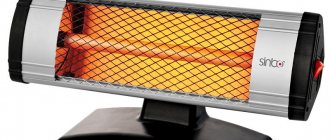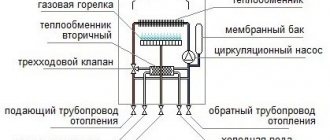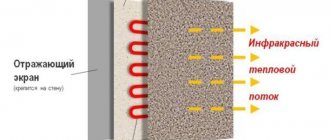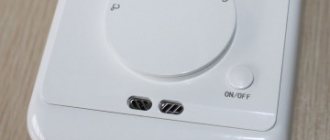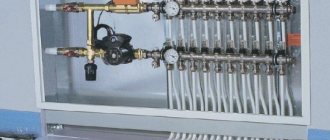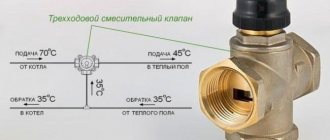Infrared radiation is a natural type of radiation. Every person is exposed to it every day. A huge part of the sun's energy reaches our planet in the form of infrared rays. However, in the modern world there are many devices that use infrared radiation. It can affect the human body in various ways. This largely depends on the type and purpose of use of these same devices.
History of discovery
In 1800, a scientist from England, W. Herschel, made the observation that in the invisible part of the solar spectrum (beyond red light) the temperature of the thermometer increases. Subsequently, the subordination of infrared radiation to the laws of optics was proven and a conclusion was made about its relationship with visible light.
Thanks to the works of the Soviet physicist A. A. Glagoleva-Arkadyeva, who in 1923 received radio waves with λ = 80 microns (IR range), the existence of a continuous transition from visible radiation to IR radiation and radio waves was experimentally proven. Thus, a conclusion was made about their common electromagnetic nature.
Almost everything in nature is capable of emitting wavelengths corresponding to the infrared spectrum, and therefore is a source of infrared radiation. The human body is no exception. We all know that everything around us consists of atoms and ions, even humans. And these excited particles are capable of emitting line IR spectra. They can go into an excited state under the influence of various factors, such as electrical discharges or heating. Thus, in the emission spectrum of a gas stove flame there is a band with λ = 2.7 μm from water molecules and with λ = 4.2 μm from carbon dioxide.
Subcategories of IR waves
The IR portion of the electromagnetic spectrum occupies the range from 300 GHz (1 mm) to 400 THz (750 nm). There are three types of infrared waves:
- Far IR: 300 GHz (1 mm) to 30 THz (10 µm). The lower part can be called microwaves. These rays are absorbed due to rotation in gas-phase molecules, molecular motions in liquids and photons in solids. Water in the earth's atmosphere is absorbed so strongly that it becomes opaque. But there are certain wavelengths (windows) used for transmission.
- Mid-IR range: 30 to 120 THz (10 to 2.5 µm). The sources are hot objects. Absorbed by molecular vibrations (various atoms vibrate in equilibrium positions). This range is sometimes called a fingerprint because it is a specific phenomenon.
- Nearest IR range: 120 to 400 THz (2500-750 nm). These physical processes resemble those that occur in visible light. The highest frequencies can be found with a certain type of photographic film and sensors for infrared, photography and video.
IR waves in everyday life, science and industry
Using certain devices at home and at work, we rarely ask ourselves about the effect of infrared radiation on the human body. Meanwhile, IR heaters are quite popular today. What fundamentally distinguishes them from oil radiators and convectors is their ability to heat not the air itself directly, but all objects located in the room. That is, first the furniture, floors and walls heat up, and then they release their heat into the atmosphere. At the same time, infrared radiation also affects organisms - humans and their pets.
IR rays are also widely used in data transmission and remote control. Many mobile phones have infrared ports for sharing files between them. And all remote controls for air conditioners, stereo systems, televisions, and some controlled children's toys also use electromagnetic rays in the infrared range.
Infrared waves
Infrared (IR) light is electromagnetic rays whose wavelengths exceed visible light (0.74-1 mm). The infrared wavelength range converges with the 300-400 THz frequency range and accommodates enormous amounts of thermal radiation. IR light is absorbed and emitted by molecules as they change in rotation and vibration.
Here are the main categories of electromagnetic waves. Dividing lines differ in some places, and other categories may overlap. Microwaves occupy the high-frequency portion of the radio section of the electromagnetic spectrum
The use of IR rays in the army and astronautics
Infrared rays are most important for the aerospace and military industries. Night vision devices (various binoculars, sights, etc.) are created on the basis of photocathodes that are sensitive to infrared radiation (up to 1.3 microns). They allow, while simultaneously irradiating objects with infrared radiation, aiming or observation in absolute darkness.
Thanks to the created highly sensitive receivers of infrared rays, the production of homing missiles became possible. Sensors in their head react to the infrared radiation of the target, whose temperature is usually higher than the environment, and direct the missile towards the target. The detection of heated parts of ships, aircraft, and tanks using heat direction finders is based on the same principle.
IR locators and rangefinders can detect various objects in complete darkness and measure the distance to them. Special devices—optical quantum generators—that emit in the infrared region are used for space and long-distance ground communications.
IR Regions
The infrared range is often divided into narrower sections of the spectrum. The German standards institute DIN has defined the following wavelength ranges of infrared rays:
- near (0.75-1.4 µm), commonly used in fiber optic communications;
- short-wave (1.4-3 microns), starting from which the absorption of IR radiation by water increases significantly;
- medium wave, also called intermediate (3-8 microns);
- long-wave (8-15 microns);
- long-range (15-1000 µm).
However, this classification scheme is not universally used. For example, some studies report the following ranges: near (0.75-5 µm), medium (5-30 µm) and long (30-1000 µm). Wavelengths used in telecommunications are classified into separate bands due to limitations of detectors, amplifiers, and sources.
The general notation system is justified by human reactions to infrared rays. The near-infrared region is closest to the wavelength visible to the human eye. Mid- and far-IR radiation gradually moves away from the visible part of the spectrum. Other definitions follow different physical mechanisms (such as emission peaks and water absorption), and the newest ones are based on the sensitivity of the detectors used. For example, conventional silicon sensors are sensitive in the region of about 1050 nm, and indium gallium arsenide is sensitive in the range from 950 nm to 1700 and 2200 nm.
There is no clear boundary between infrared and visible light. The human eye is much less sensitive to red light above 700 nm, but intense light (from the laser) can be seen down to about 780 nm. The beginning of the infrared range is defined differently in different standards - somewhere between these values. Typically this is 750 nm. Therefore, visible infrared rays are possible in the range of 750–780 nm.
Infrared radiation in scientific activities
One of the most common is the study of emission and absorption spectra in the IR region. It is used in the study of the characteristics of the electronic shells of atoms, to determine the structures of all kinds of molecules, and in addition, in the qualitative and quantitative analysis of mixtures of various substances.
Due to differences in the scattering, transmittance and reflection coefficients of bodies in visible and infrared rays, photographs taken under different conditions are slightly different. Photos taken in infrared often show more detail. Such images are widely used in astronomy.
Studying the effect of IR rays on the body
The first scientific data on the effects of infrared radiation on the human body date back to the 1960s. The author of the research is Japanese doctor Tadashi Ishikawa. During his experiments, he was able to establish that infrared rays tend to penetrate deep inside the human body. In this case, thermoregulation processes occur, similar to the reaction to being in a sauna. However, sweating begins at a lower ambient temperature (it is about 50 ° C), and the heating of the internal organs occurs much deeper.
During such warming, blood circulation increases, the vessels of the respiratory organs, subcutaneous tissue and skin dilate. However, prolonged exposure to infrared radiation on a person can cause heat stroke, and strong infrared radiation leads to burns of varying degrees.
IR protection
There is a small list of measures aimed at reducing the danger of exposure to infrared radiation on the human body:
- Reducing radiation intensity. This is achieved through the selection of appropriate technological equipment, timely replacement of outdated equipment, as well as its rational layout.
- Removing workers from the radiation source. If the production line allows, remote control of it should be preferred.
- Installation of protective screens at the source or workplace. Such fences can be arranged in two ways to reduce the impact of infrared radiation on the human body. In the first case, they must reflect electromagnetic waves, and in the second, they must delay them and convert the radiation energy into thermal energy and then remove it. Due to the fact that protective screens should not deprive specialists of the opportunity to monitor processes occurring in production, they can be made transparent or translucent. For this purpose, the materials chosen are silicate or quartz glass, as well as metal mesh and chains.
- Thermal insulation or cooling of hot surfaces. The main purpose of thermal insulation is to reduce the risk of workers receiving various burns.
- Personal protective equipment (various special clothing, glasses with built-in light filters, shields).
- Preventive actions. If during the above actions the level of exposure to infrared radiation on the body remains sufficiently high, then an appropriate work and rest regime should be selected.
Benefits for the human body
Infrared radiation affecting the human body leads to improved blood circulation due to the dilation of blood vessels, better saturation of organs and tissues with oxygen. In addition, an increase in body temperature has an analgesic effect due to the effect of rays on the nerve endings in the skin.
It was noted that surgical operations performed under the influence of infrared radiation have a number of advantages:
- Pain after surgery is somewhat easier to bear;
- Cell regeneration occurs faster;
- the influence of infrared radiation on a person allows one to avoid cooling of internal organs when performing surgery on open cavities, which reduces the risk of developing shock.
In patients with burns, infrared radiation makes it possible to remove necrosis, as well as perform autoplasty at an earlier stage. In addition, the duration of fever is reduced, anemia and hypoproteinemia are less pronounced, and the frequency of complications is reduced.
It has been proven that IR radiation can weaken the effect of some pesticides by increasing nonspecific immunity. Many of us know about the treatment of rhinitis and some other manifestations of colds with blue IR lamps.
Harm to humans
It is worth noting that the harm from infrared radiation to the human body can also be very significant. The most obvious and common cases are skin burns and dermatitis. They can occur either when exposed to weak waves of the infrared spectrum for too long, or during intense irradiation. If we talk about medical procedures, it is rare, but still, heat strokes, asthenia and exacerbation of pain occur if not treated correctly.
One of the modern problems is eye burns. The most dangerous for them are IR rays with wavelengths in the range of 0.76-1.5 microns. Under their influence, the lens and aqueous humor heat up, which can lead to various disorders. One of the most common consequences is photophobia. Children who play with laser pointers and welders who neglect personal protective equipment should remember this.
Harm and consequences of exposure to infrared rays
Strong exposure to infrared light does harm, not good, to the membrane of the eye, or, more precisely, dries it out. It occurs in very hot areas.
Strong radiation also causes skin burns. In this case, redness of the skin occurs first. Occupational diseases of people who are often exposed to radiation in the workplace include diseases whose symptoms include skin lesions. Neoplasms may also occur. Milder consequences of harmful effects include dermatitis, which is also a difficult disease.
We recommend reading: Health benefits and harms of microwave ovens, operating principles
IR rays in medicine
Treatment with infrared radiation can be local or general. In the first case, a local effect is carried out on a specific area of the body, and in the second, the entire body is exposed to the rays. The course of treatment depends on the disease and can range from 5 to 20 sessions of 15-30 minutes each. When carrying out procedures, the use of protective equipment is mandatory. To maintain eye health, special cardboard covers or glasses are used.
After the first procedure, redness with unclear boundaries appears on the surface of the skin, which goes away after about an hour.
Infrared treatment
Thus, the benefits of infrared radiation for humans are achieved through the following mechanism:
- The heat coming from the rays triggers and accelerates biochemical reactions.
- First of all, tissue regeneration processes begin to intensify, the network of blood vessels becomes wider, and blood flow accelerates.
- As a result, the growth of healthy cells becomes more and more intense, plus the body begins to independently produce biologically active substances.
- All this reduces blood pressure due to better blood supply, thereby achieving muscle relaxation.
- Provides easy access of white blood cells to foci of inflammation. This leads to strengthening the immune system and strengthening the body’s protective functions in the fight against various diseases.
We recommend reading: The benefits and harms of riding a scooter
It is thanks to these special properties that a general strengthening effect for the body is achieved when treated with infrared rays.
During treatment, both the entire body and some of its affected parts can be exposed to irradiation. Procedures can be performed up to 2 times a day, and the session lasts up to half an hour. The number of procedures depends on the patient's needs. To avoid harm, during sessions it is imperative to protect the eyes and the area around them from exposure to radiation. Various methods are used for this.
Attention! Redness of the skin that appears on the skin after the procedure will disappear within an hour.
Action of IR emitters
With the availability of many medical devices, people purchase them for individual use.
However, it must be remembered that such devices must meet special requirements and be used in compliance with safety regulations. But the main thing is that it is important to understand that, like any medical device, infrared wave emitters cannot be used for a number of diseases. The influence of infrared radiation on the human body
| Wavelength, µm | Useful action |
| 9.5 µm | Immunocorrective effect in immunodeficiency states caused by fasting, carbon tetrachloride poisoning, and the use of immunosuppressants. Leads to the restoration of normal levels of cellular immunity. |
| 16.25 µm | Antioxidant action. It is carried out due to the formation of free radicals from superoxides and hydroperoxides, and their recombination. |
| 8.2 and 6.4 µm | Antibacterial effect and normalization of intestinal microflora due to the influence on the process of synthesis of prostaglandin hormones, leading to an immunomodeling effect. |
| 22.5 µm | Leads to the transfer of many insoluble compounds, such as blood clots and atherosclerotic plaques, into a soluble state, allowing them to be removed from the body. |
Therefore, a qualified specialist, an experienced doctor, should select a course of therapy. Depending on the length of the emitted infrared waves, the devices can be used for different purposes.
Infrared irradiation
Phototherapy
Phototherapy
– a method of physiotherapy that involves dosed exposure of the patient’s body to infrared, visible and ultraviolet radiation. According to its physical properties, light is a stream of electromagnetic oscillations in the optical range.
Infrared irradiation
Infrared irradiation is the use of infrared radiation for therapeutic and prophylactic purposes. Absorbed by the tissues of the body, the energy of infrared radiation is transformed into heat, which leads to a local increase in the temperature of the irradiated areas by 1-2 degrees. C. Heating of tissues excites thermoreceptors and triggers the heat transfer mechanism. Hyperemia occurs in the affected area.
One of the established effects of heat rays is a reflex expansion of the blood and lymphatic vessels of internal organs in the zone of segmental regulation. Therapeutic effects
: anti-inflammatory, vasoactive, vasodilator, antispasmodic, lymphatic drainage, local analgesic, catabolic (with obesity, the breakdown of fats, proteins and carbohydrates occurs in subcutaneous adipose tissue), reparative - regenerative (reparative - cell restoration, regenerative - formation of new cells) for burns and frostbite.
Indications:
subacute and chronic non-purulent inflammatory diseases of internal organs
,
burns and frostbite, slowly healing wounds and ulcers, diseases of the peripheral nervous system with pain syndrome (myositis, neuralgia, radiculitis), consequences of injuries to the musculoskeletal system (local irradiation), sleep disorders, rheumatism, diseases of the cardiovascular system with stage 1 circulatory failure, asthma in remission, arthrosis, ENT diseases, skin diseases (general radiation).
Contraindications:
acute inflammatory diseases, cerebrovascular accidents (especially in the vertebrobasilar region), autonomic dysfunction.
Equipment
: Minin lamp and Sollux lamp.
Ultraviolet irradiation
– rays penetrate tissue to a depth of 1 mm and are absorbed by the epidermis.
They are distinguished: Long-wave ultraviolet irradiation
(DUV irradiation) - wavelength 320-400 nm.
Stimulates the processes of melanin formation in cells. medicinal effects
: pigmenting, immunostimulating.
indications
: joint diseases, slow-healing wounds and ulcers, fatigue, skin diseases (psoriasis).
contraindications
: acute inflammatory purulent diseases, liver and kidney dysfunction, hyperthyroidism.
equipment
: “Cleo”, fluorescent lamps.
Methodology:
the distance from the source to the body is at least 10-15 cm. The dosage is carried out according to the intensity and duration of irradiation.
Medium wave ultraviolet irradiation (SUV irradiation)
– wavelength 320-275 nm.
Promotes the formation of vitamin D 3, stimulates reparative processes, enhances epithelization, and has a pigmenting effect. therapeutic effects
: suberythemal doses have a vitamin-forming, immunomodulatory effect, erythemal doses have an analgesic, desensitizing effect.
indications:
acute inflammatory skin diseases, D 3 hypovitaminosis, nutritional-constitutional obesity of the 1st degree, diseases of the peripheral nervous system with pain, diseases of the joints and bones.
contraindications
: hyperthyroidism, chronic renal failure, increased sensitivity to ultraviolet rays, systemic lupus erythematosus (a disease of the immune system with damage to connective tissue).
Dosage:
The dose unit in this method is 1 biological dose (biodose) - the shortest time of skin irradiation required to produce a weak but clearly defined erythema. Determination of biodose
1. The patient’s position on the couch is lying on his back. The patient puts on light-protective glasses. 2. A biodosimeter with closed windows is attached to the skin of the abdomen outward from the midline (right or left). Areas of the body not subject to UV irradiation are covered with a sheet. 3. The irradiator lamp is placed above the biodosimeter, measuring along a plumb line with a centimeter tape the distance required for subsequent treatment procedures (30 or 50 cm) from the radiation source to the surface of the biodosimeter. 4. Turn on the irradiator and sequentially (opening the shutter every 30 s) irradiate 1-6 windows of the biodosimeter. 5. Upon completion of irradiation of all windows, close them with a shutter and turn off the irradiator.
The results of determining individual photosensitivity of the skin are assessed after 24 hours (in daylight), while the erythema stripe of minimal (in terms of color degree) intensity, but with clear edges, will correspond to the time of 1 biodose.
For example, when the biodosimeter was irradiated for 3 minutes (i.e., 30 s for each window), the irradiation time of the first window was 3 minutes, the second - 2 minutes, etc., and the sixth - 30 s. After a day, only 5 of 6 stripes appeared on the skin of the abdomen with decreasing (top to bottom) color intensity, with the last (5th) strip having unclear (“blurred”) edges. In this case, the threshold erythema reaction of the skin should be taken as the 4th strip (with clear edges) and the corresponding biodose time, i.e. 1.5 minutes.
Methodology:
Two main methods are used - general and local.
General UV irradiation
(individual and group) is carried out with long and medium waves from a distance of 70-100 cm. The front, back and side surfaces of the body are irradiated successively.
Wear protective goggles over the eyes. There are basic, accelerated and delayed irradiation schemes in suberythemal gradually increasing doses. The delayed regimen is used in children, as well as in weakened individuals during the recovery period. The accelerated regimen is used when intense irradiation is necessary - for furunculosis, for physical prophylaxis for practically healthy people. local ultraviolet irradiation is carried out
from a distance of 10-50 cm. local ultraviolet irradiation is almost always carried out in erythemal doses. Depending on the intensity of irradiation, small erythemal doses (1-2 biodoses), medium (3-4 biodoses), large (5-6 biodoses) are distinguished .
Short-wave ultraviolet irradiation (SUV irradiation)
- uses local irradiation of affected areas of the skin, mucous membranes of affected organs or AUFOK (autotransfusion of ultraviolet irradiated blood).
Therapeutic effects
: bactericidal, immunostimulating, metabolic (optimization of oxygen consumption, hypoglycemic effect, normalization of lipid metabolism).
indications:
for the superficial technique: diseases of the skin, nasopharynx (mucous tonsils, nose), inner ear, wounds with the risk of anaerobic infection, skin tuberculosis; for AUFOK – purulent inflammatory diseases, trophic ulcers, chronic bronchitis, gastritis, peptic ulcer, ischemic heart disease, hypertension, neurodermatitis, psoriasis, diabetes. contraindications: for the superficial technique – increased sensitivity of the skin to ultraviolet radiation; for AUFOK – thrombocytopenia, mental illness, stroke, acute myocardial infarction.
